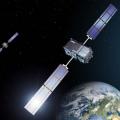The four Galileo satellites launched on December 12 have successfully transitioned from Early Orbit Phase to In Orbit Testing.

On December 12, four Galileo satellites started their journey on an Ariane 5 rocket from the European Spaceport in Kourou. Shortly after leaving the rocket, the satellites – named Nicole, Zofia, Alexandre and Irina – reached stable configuration and established first contact with Earth.
Next, the satellites began moving to their destination Galileo orbit with a set of very precise manoeuvres, with Nicole and Zofia reaching their final target orbits on February 6, and Alexandre and Irina following suit on February 14. With all four satellites in their final slots, EOP came to an end on February 26.
Time for In Orbit Testing
The quartet of Galileo satellites are now starting the In Orbit Testing phase, a comprehensive characterization and evaluation of the satellites’ behaviour in space. Although extensive tests were performed before launch, the space environment cannot be fully represented on ground, and thus extra testing in space is necessary. This includes transmitting test navigation signals, whose performance will be carefully monitored and tested. The performance tests ensure that the satellites’ in-orbit performance is in line with the predictions made during on-ground testing.
Once the performance testing is concluded and deemed satisfactory, the satellites will enter into service as part of the Galileo constellation – bringing the total number of satellites to 22.
Media note: This feature can be republished without charge provided the European GNSS Agency (GSA) is acknowledged as the source at the top or the bottom of the story. You must request permission before you use any of the photographs on the site. If you republish, we would be grateful if you could link back to the GSA website (http://www.gsa.europa.eu).